|
The DECC Green Deal team have kindly been in touch after spotting my tweets and blog. I have agreed to put feedback together from a GD occupant perspective and they have generously invited me to meet with them next week. (So any other occupants out there, feel free to contact me about the good and the bad) DECC stated that: " … we have been doing all we can to work with Green deal Providers to help them enter the market as quickly as possible. The Green Deal is a market based mechanism. Whilst Government is responsible for putting in place the legislative and supporting frameworks to enable delivery, we are reliant on the private sector to come forward and offer green deal assessments, Plans and measures to consumers." The letter goes on to state that : "There are 48 companies registered as Green deal Providers and The Green Deal Finance Company stands ready to provide finance to them. Of these 48 companies, some are more advanced than others in terms of their own systems and readiness to deliver." Of the 40 providers I contacted, around 55-60% responded. Of those who may offer individual households finance, they said that the software is not yet ready. The good news however is that DECC state that " .. we are aware that some companies are already offering ECO funding to support the option of solid wall insulation in individual households". This is good news, and DECC have - with my agreement- passed on my details to 2 companies, "who should be in touch shortly". Interestingly, I have also been contacted by another occupant, who is trying to find a Green Deal installer with ECO access, (no need for finance) and he has been unable to find someone too. He works in the building industry so he has been trying to use his insider knowledge and contacts to negotiate and find willing 'ECO' installers. This process is obviously not repeatable for those outside the industry, and just adds to uptake barriers and hassle. Finally, the DECC letter also says that ESAS (Energy saving advice Service 0300 123 1234) is:"...currently in the process of updating its advice to better reflect the status of different Providers and readiness to go to the market. ESAS is therefore the referral menchanism for those seeking a provider…". However, I did contact ESAS in April, before the DECC letter arrived and all they could do was take my details so DECC can give me a list of Providers who are ready as they do not have that list. They told me it would take 7-10 days to hear back with this information. So far, I have had more luck with direct DECC contact as I have not heard anything yet, though this is rather an unusual route and not really what I am meant to do. ESAS also told me (incorrectly) that all ECO-funding is means-tested and "only for people on certain benefits". When I read out a phrase from their own leaflet and Ofgem's website to contest this statement, ESAS then read out a standard statement stating the 3 parts of ECO (i.e. ECO Affordable Warmth; ECO Carbon Saving and ECO Carbon Saving Communities), to then agree that for ECO Carbon Saving, residents do not need to be on benefits to be eligible. Let's hope that this misinformation is due to early teething-problems, but I pointed out that it is crucial that ESAS give correct and consistent information to the consumer, particularly as in the information leaflet provided by the Green Deal Advisor it clearly directs consumers to them for advice on ECO-eligibility. I have also received a request from DECC for feedback via an online survey ( and £10 voucher to encourage me to do so). It is a long and detailed survey, but - if returned en masse by Green Deal occupants - will give insights to motivations for the Green Deal, assessment experience and identification of uptake barriers of approved measures. It is hoped that each occupant will fill this in as it will be useful feedback.
3 Comments
"Our clients are the ones paying our salaries – so how do they see us? Terry Wardle takes a look at how the work of Green Deal Advisers
is being reviewed in the media." --> A good blog (eventhough he describes me as "probably.... the client from hell"! An interesting quote from a journalist on allowing a Green Deal Advisor in her home: ‘A complete stranger is in my house asking me intimate details about my family’s showering and cooking habits and how many times we use the washing machine. She has even made a rough sketch of our bedroom. Pointing a laser beam at each external wall to gauge room dimensions, she casually asks if I put lids on the saucepans when I boil my vegetables. Who is this nosy individual I have let into my home?’ I don't touch much on the intrusion part in my blog below, as I had expected such occupant questions, but the above quote made me realise that it will take many people by surprise indeed and not all may feel comfortable about it or wonder why an assessor needs to know this. Terry also wrote a blog on the role of Green Deal Assessors - still pretty much up to date. As per Linn Rafferty's comment: "Assessor is the term used by the GD Oversight and registration body (GD-ORB, run by Gemserv) to mean the organisation providing the GD Advice Service (GDAS). Advisor is the human being who passed the GDA qualification, and actually visits the customer and provides the assessment and advice. So your visit was delivered by an Advisor working with an Assessor." On another note, I received (in my spam folder) an email from the BRE asking for feedback on the EPC assessment as this is registered with them. The survey asked a handful of general questions about the Adviser's conduct (did they show their badge upon entering; did they gain access everywhere etc). Ofcourse this separate email about the EPC feedback is likely to confuse the occupant who gets the EPC as a by-product of the Green Deal Assessment. I have relayed this feedback to the BRE. Today I received this comment from Katherine. I have posted it in its entirety. This is indeed worrying.
"Hi Sofie, I work for an installer - and I just thought to add a little from our side of things may be informative (though not actually helpful!). We have houses ready for funding, but no providers want to give full funding. We specifically targeted areas that were ECO eligible - you can look up the eligible areas, then search your postcode to see if it is in a "vulnerable" area. This should achieve 100% funding for Solid Wall Insulation - as it is by definition a "hard to treat" measure. However, when it comes down to the nitty gritty, the providers are constantly changing the goal posts. We are now told a property needs to be solid fuel AND solid wall - and even then may not achieve full funding. Personally, I can not see the point of ECO if they are not intending to use it for its purposes - to help the vulnerable insulate their homes. They are trying to "force" people into having Green Deal finance to top up the ECO grants. There is no mention of fuel types determining the eligibility for ECO, it just ticks more boxes and gives a bigger saving than a house on mains gas - but this is not why ECO was set up. Sorry, now I'm just rambling. Back to my point, even now, the providers are reluctant to give us even an idea of funding - so we are left not really knowing what to tell people, other than be patient, we are trying to get them the best deal we can. But I think you may have more luck with a smaller, local installer that has access to funding via providers. Though as you say, there is no easy way to find these. Very best of luck to you though." Added 4pm 15/04: It appears that providers are trying to look for the 'lowest hanging ECO fruits', i.e. the interventions giving the greatest carbon reductions for least amount of effort/money, which is indeed the Solid Walled (SW) and solid fuelled dwellings (and where many properties in one go can be treated). However, it is problematic if this is at the expense of ECO-funding properties that are SW and in vulnerable areas, simply because they are not solid fuelled. This will presumably cut out much or all of greater London properties, despite 30% being classified as SW properties, due to the smoke control zone and lack of solid fuelled properties,...Equally individual dwellings may not be able to access ECO-funding for several months or years until the low-hanging fruits are harvested first. It seems that individual householders may find it difficult - or impossible to access ECO funding, despite 'in theory' their properties qualifying. Unable to get access to the top-up funding required to undertake solid wall insulation to meet the Green Deal's Golden Rule, presumably means that they cannot undertake this Green Deal measure unless they are able to afford the difference. If this is the way things are going; ECO-funding might have been mis-advertised and householders might have been deceived. So, about one month on from sending out 40 queries to providers, I still have not received any finance plan; I have no idea what the costs would be for the approved Green Deal measures, nor what (if any) ECO funding is available, nor what cash-back incentive may apply - let alone have I had any measures installed. This is somewhat frustrating - to say the least.
I do wonder whether less engaged and motivated occupants may give up at this stage; the hassle factor is significantly increased having had an assessment done and then not being able to obtain any other information or having works done. If I had paid for the assessment and then being unable to proceed or knowing when I might be able to follow up on its recommendations, I would have felt I just wasted the assessment fee. Admittedly this lack of progress does not exactly instill confidence in the whole Green Deal process. A brief update below:
A few other things to update on/clarify, thanks to twitter and LinkedIn discussions and people leaving comments:
Some interesting discussion here on Linked in and here.
And by Nick Duxbury on large-scale ECO for RSLs. Warnings about Green Deal 'cold calls' here - rather worrying! Perhaps because I have been rather critical of the government’s Green Deal policy (see here) and expected very little useful, that I ended up being pleasantly surprised with a Green Deal assessment, though it is not entirely without its teething problems. I signed up for an assessment as part of Haringey’s free assessment offer *. Maybe I simply got lucky with a knowledgable assessor, assigned on behalf of Make My Home Green, or perhaps I know more than most householders so I asked the right questions and heard the right things. Nevertheless I thought I should share my experience and the process - as it is an interesting - and ongoing journey which has raised several issues. * DECC provided funding for 580 assessments in Haringey for a cost of £150,000 —> so around £250 per assessment. Similar arrangements exist in other boroughs. Green Deal Assessment Impressively, it only took 1 week from my phone call to an assessor knocking on my door, with confirmation prior to email. I was also emailed Green Deal Information Pack and asked to give some basic information such as what the age of the property is; whether any improvements have already been made or whether the property is in a conservation area/listed etc. The entire visit took 2 hours, and the assessor was conscious that it did not take longer; not so much for her time spent, but she said it was also related to intrusion in someone’ s home. Process Firstly, the assessor appeared knowledgable and dedicated. She clearly explained what information she would require and the process of her assessment. The assessor explained in plain language that the assessment would be based on some measurements taken; bills provided and checking of boiler specification and wall build up as well as a more specific occupancy assessment. She clarified that the output is based on an EPC (using RdSAP) and the Green Deal recommendations, which will recommend eligible measures, will be based on this tool. The assessor explained that the next step would be getting in touch with a Green Deal provider to get quotes for these measures, but she then advised that the Green Deal Plan could be used for improvements even if not funded through the Green Deal providers: “you may decide a Green Deal provider is not appropriate for you or you may be able to finance improvements in other ways, but the Green Deal plan should still give you an idea of priorities and payback”. The assessor also recommended visiting SuperHomes during their open days to gain a sense of what is possible and what certain interventions may look like and to hear first-hand how they are experienced by occupants. The assessor then proceeded to take measurements in the property, such as dimensions, wall depths, checking loft insulation etc. Once this was done, the assessor needed 30 minutes or so to do the EPC there and then. I was then asked to give occupancy specific information (such as how often we take baths/showers; what our washing machine washing temperature is (30ºC since you ask); what our typical central heating schedule is during the week and weekend etc). I liked that the EPC and Green Deal Recommendations are then discussed there and then, and what the eligible measures are; which may be fully funded under a Green Deal Finance plan (and which ones would require partial up-front payment), as well as the impact of our occupancy patterns (in our case being ‘below average energy users’) and any energy savings based on today’s prices. I was surprised that our property was put in the D-rating (and not much lower) as aside from some loft insulation, basic airtightness measures, double glazing and an efficient gas-condensing boiler, there are no other efficiency measures. I think this does not reflect the actual efficiency of our property, but highlights shortcomings of EPC ratings. An example Green Deal EPC ratings can be viewed below and downloaded here. Fabric and occupancy assumptions
The assessment did rely on the occupant being aware of the house history (for example age of windows for the assessor to then derive an assumed performance), which lots of people will not know if interventions were undertaken by others before they lived there. In any case, assumptions of performance are assumed; and has to be based on evidence: i.e. if no access to the loft is possible, no insulation is assumed as it cannot be verified; despite the owner being able to state what it is. Adjustments were made to our 250 mm loft insulation due to lots of cardboard boxes on top and compacting it and the EPC input was reduced to 100 mm loft insulation by the assessor. Equally, where DIY wall-insulation is installed, and the assessor cannot gauge the depth of insulation or its kind (and no Part L certificate would exist to prove its existence and performance), it will not be used in the EPC. While this ofcourse makes sense; ignoring certain improvements may overestimate the potential for further improvements and jeopordise the golden rule and actual payback. While Green Deal ‘in-use factors’ will be applied to proposed interventions, this will probably only partly protect consumers from over-estimating potential energy-savings (and are presumably there to reflect a gap of performance between predicted and actual energy savings, not for ignored or unverifiable improvements?). Also, where no room or house thermostat (as in our case), input assumption is that occupants heat to 21ºC heating before and after any intervention. This may be useful for future high energy users, but again may overestimate actual behaviour. Many existing houses do not have thermostats and on cold days, many will not be able to heat spaces to 21C (or may not want to) - so this is again a big assumption to make. The assessor did mention comfort-taking however and that this could be a reason why actual savings may not be met. Access to energy bills Finally, in the email and in the Green Deal Assessment booking phone call, I was asked if I had access to latest energy bills or if I knew the yearly energy usage. I take note each year of our yearly energy usage, and had not dug out my bills, but gave the kWh/m2/year and cost associated with it. However, this was not accepted: I needed to provide evidence for this and ended up having to go through bills to find the latest. This should have been made much clearer; also that the latest quaterly bill is not good enough; but it needs to be a full year’s worth of data, and most recent. I do wonder whether this means people who have just moved in can therefore not apply for a Green Deal Plan? The EPC is still based on the predicted standard occupancy, and the Occupancy Assessment then is adjusted with additional information provided, presumably also using the actual energy use derived from energy bills. The Green Deal Occupancy Assessment and recommendations The assessor explained that where at least 1 SAP point can be increased, an intervention comes up as an eligible Green Deal measure. The Occupancy assessment shows that we are below average users and that we would save less compared to ‘typical user’. One of the measures that comes up is fitting “low-energy lights to all fixed outlets”, (though not one of the Green Deal plans you can borrow for), which is deceptive in our case: we bought the house with halogen fitted lights in bathroom and kitchen; but like most fixed lights (I hate overhead lighting + they tend to be over-designed so I feel I am sitting in an abatoir!) we do not use them, and the original halogen lightbulbs have never had to be replaced. So not really an applicable measure for us. I was however reassured by the top 3 measures (see below image) recommended by the Green Deal: solid wall insulation and floor insulation, followed by a room thermostat, of which only solid wall insulation may be fully eligible for Green Deal finance (green tick). The other measures (orange ticks) would required (partial) up-front finance; as would the active measures further down the list: solar water heating and PV’s. While the passive measures were obvious to me and reassuring that they were prioritised by the Green deal, I do have some concerns:
With regards to the solar panel recommendations I also have other concerns:
The assessor did make it clear that any special or decorative finishes would be 'extra' and would have to be paid for (upfront) through other means - though what is included as a ‘basic’ finish is ofcourse open to interpretation, and it will be crucial that the installer and provider discuss this with occupants at later stages. You can view the Occupancy Asessment below + download it here. Getting the measures installed
So far so good. The assessor left and emailed me 4 days later the final EPC and Occupancy Assessment with a link to potential Green Deal Providers. The assessor mentioned that we may qualify for ECO-funding and possibly also from ‘affordable warmth’ if our area is in a priority area (it is, but I am yet to find out what this means- if anything). Unfortunately, the next stage is not so smooth and has been frustrating - though ofcourse I am one of the few guinea-pigs in a new policy:
So, around 22 providers have yet to get back to me more than 7 days after my query was sent out, but I did receive two positive responses, one for a more technical survey after Easter, and one response from an installer (through twitter). One response went as far to say that they won’t be ready until late June and that: “It’s a protracted process I am afraid to say and rather frustrating” The Green Deal can also be delivered by an accredited installer, who can quote and then team up with a provider; or where no up-front finance is required can simply undertake the work, crucial to qualify for ECO-funding (and any of the early cash-incentives). Yet, gaining access to Green Deal accredited installers seems protracted - no such list seems to be provided on the DECC website. |
About SofieThis is Sofie's blog; or rather a collection of musings & articles sometimes also published elsewhere. More about Sofie here. Archives
April 2014
Categories
All
|

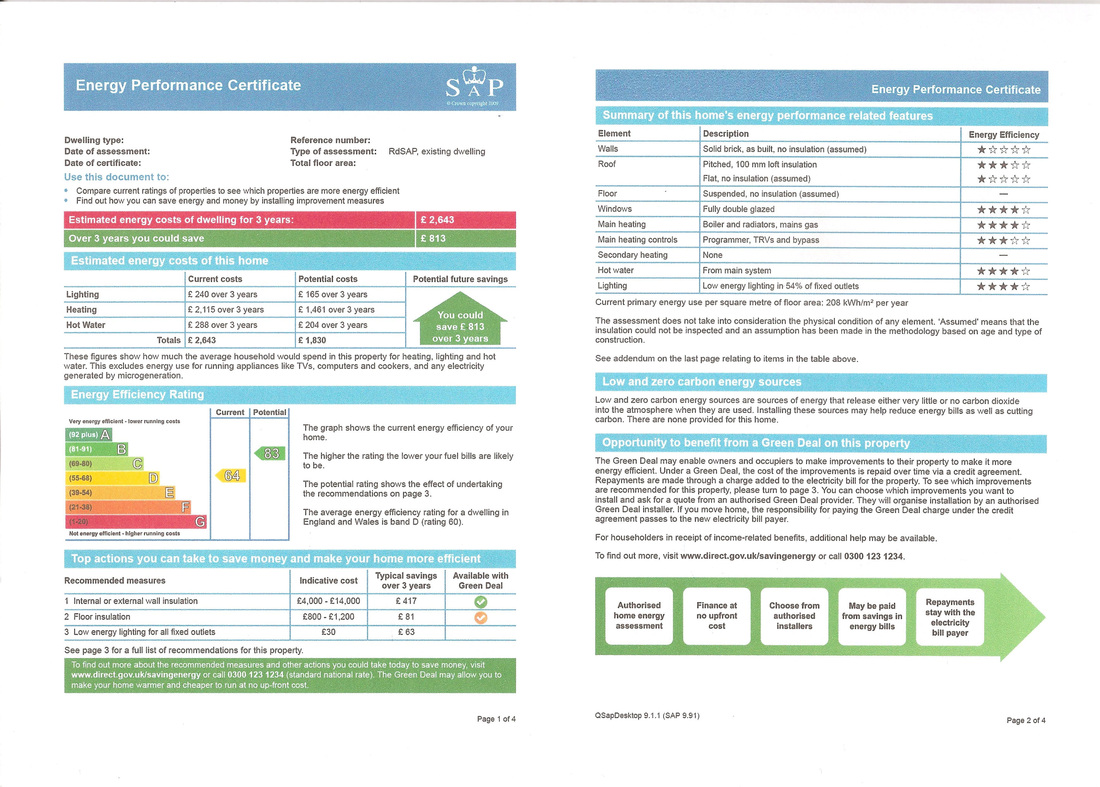
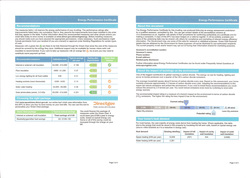
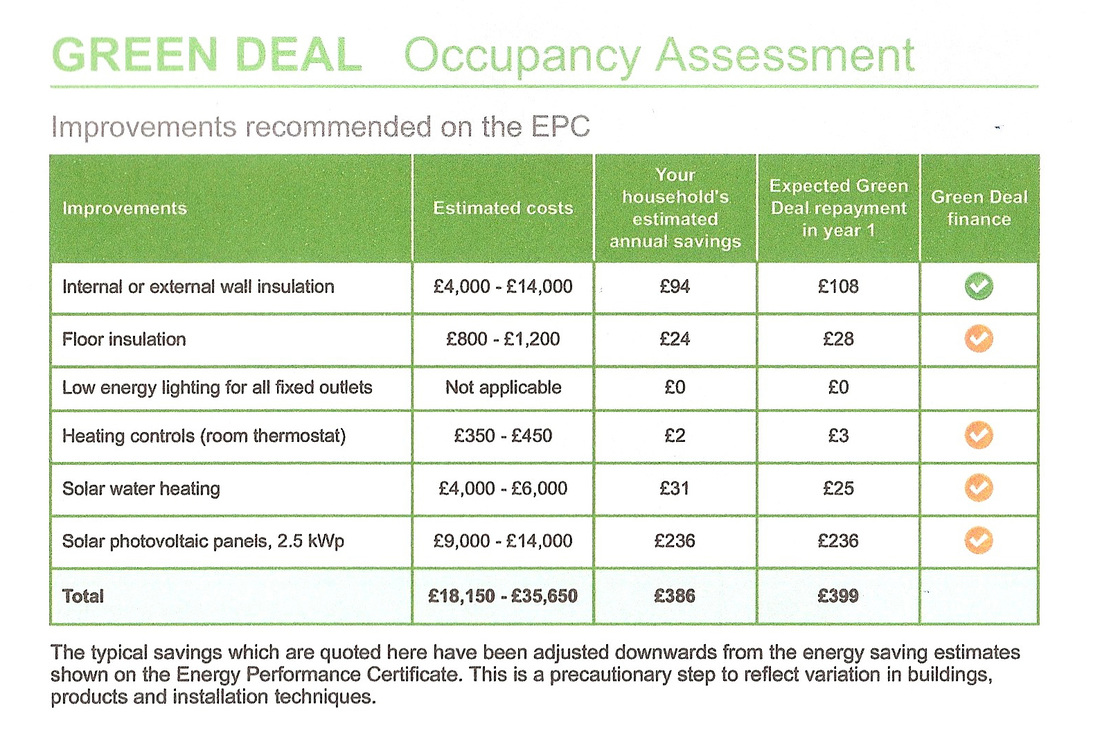
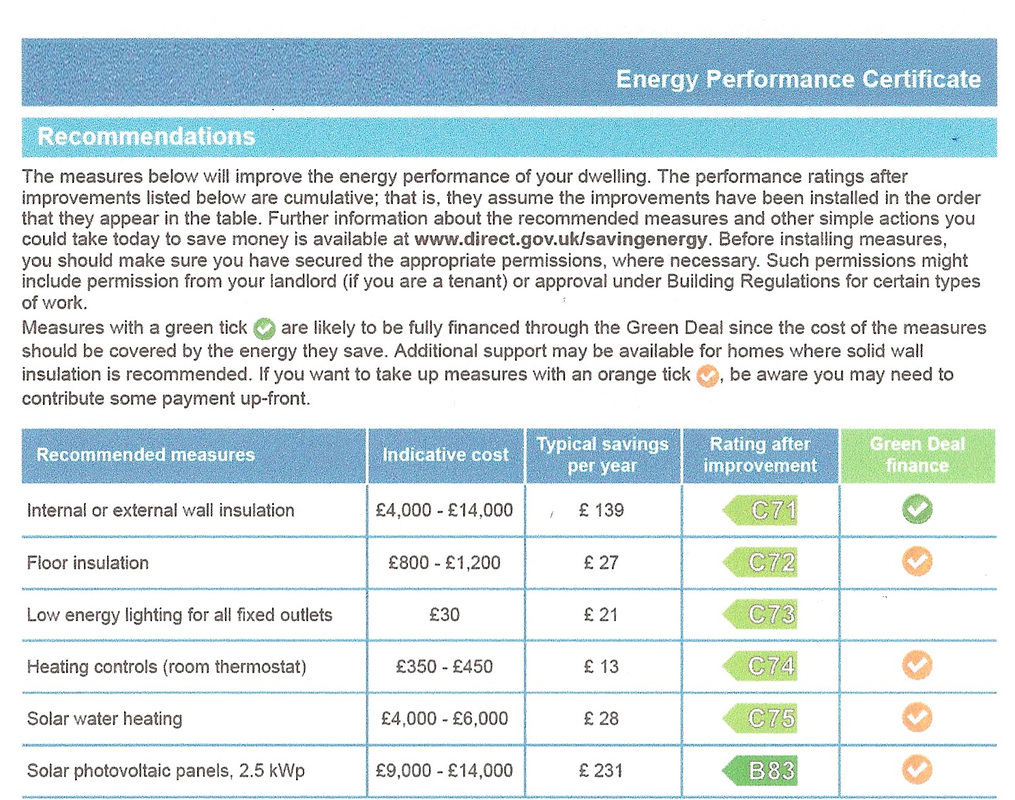
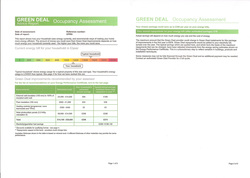
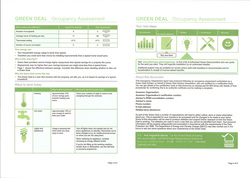
 RSS Feed
RSS Feed